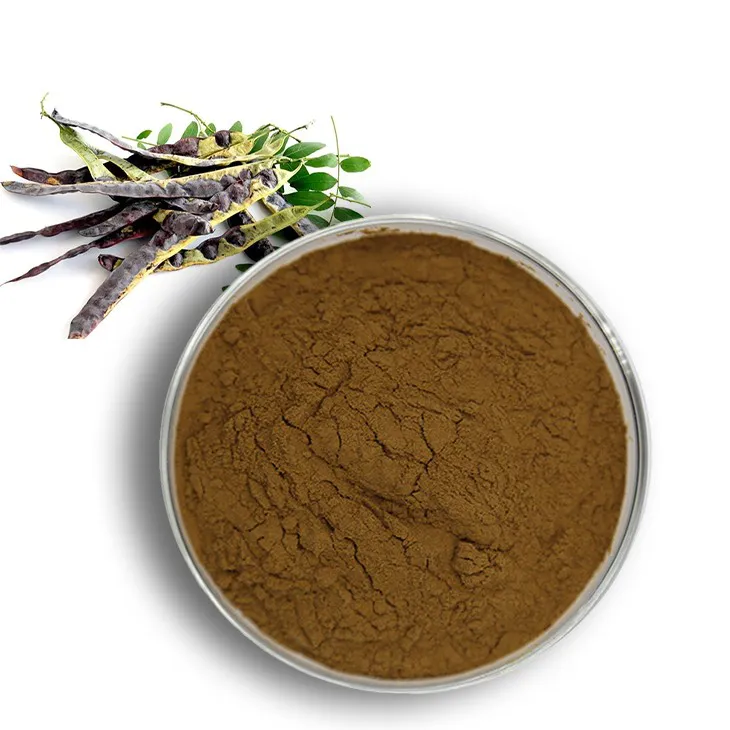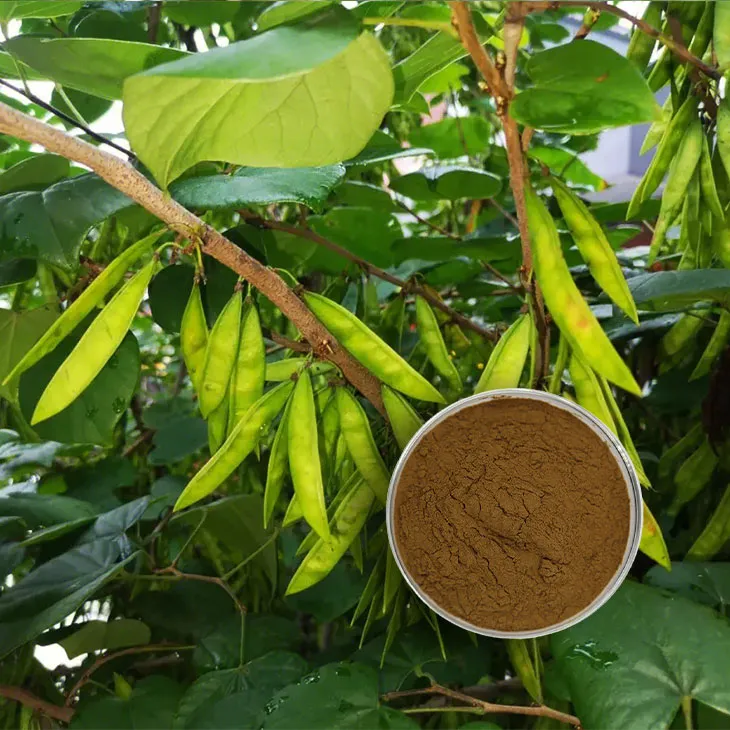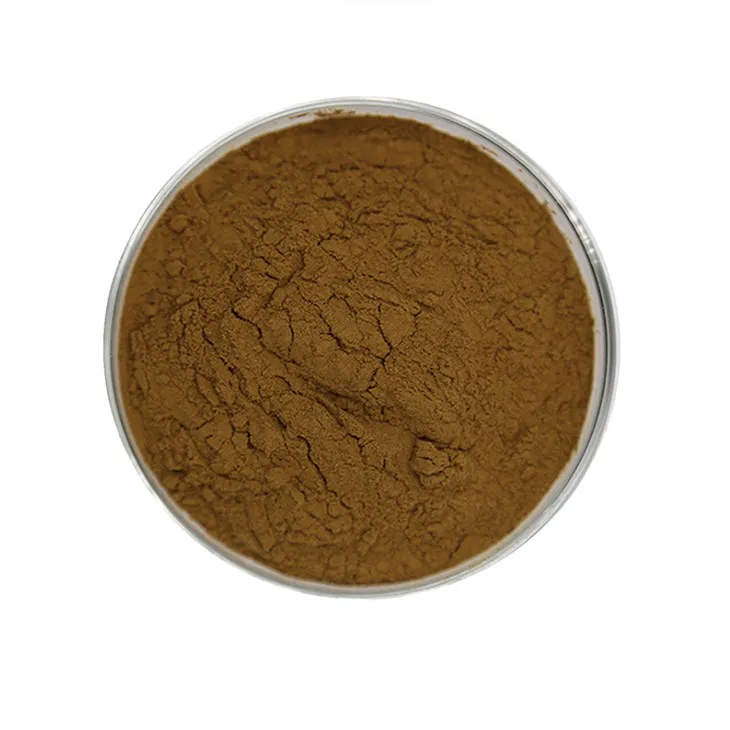- 0086-571-85302990
- sales@greenskybio.com
Organic saponin extract powder factory.
2024-11-30

Introduction
Organic Saponin Extract powder factories play a crucial role in exploring the potential of saponins. Saponins are a diverse group of natural compounds that have attracted significant attention due to their various beneficial properties. These factories are at the forefront of the industry, using advanced technology to produce high - quality Saponin Extract powders.

The Importance of Raw Materials
The choice of raw materials is of utmost importance in the production process of organic Saponin Extract powder. Organic saponin extract powder factories typically select plants that are well - known for their high saponin content.
1. Ginseng
Ginseng is a highly regarded plant in traditional medicine. It contains a significant amount of saponins, known as ginsenosides. These ginsenosides have been studied for their potential health benefits, such as improving cognitive function, enhancing the immune system, and having antioxidant properties.
2. Fenugreek
Fenugreek is another plant rich in saponins. The saponins in fenugreek have been associated with various health - promoting effects, including the regulation of blood sugar levels and cholesterol management. Fenugreek saponins may also have potential applications in the field of sports nutrition, as they may contribute to muscle building and fat loss.
3. Yucca
Yucca plants are known for their saponin - containing properties. Yucca saponins have been used in traditional medicine for their anti - inflammatory and analgesic effects. In addition, they may have potential applications in the agricultural sector as natural pesticides.

The Extraction Process
The extraction process in organic saponin extract powder factories is designed to efficiently obtain saponins while preserving the integrity of the saponin molecules. This process involves several key steps:
Harvesting and Preparation: The selected plants are carefully harvested at the appropriate time to ensure maximum saponin content. After harvesting, the plants are thoroughly cleaned and prepared for extraction. This may involve drying, grinding, or other pre - treatment methods.
Extraction: Different extraction methods can be used, such as solvent extraction or supercritical fluid extraction. Solvent extraction is a commonly used method, where a suitable solvent is used to dissolve the saponins from the plant material. Supercritical fluid extraction, on the other hand, uses a supercritical fluid, such as carbon dioxide, which has the properties of both a gas and a liquid. This method is often preferred as it can provide a more selective and environmentally friendly extraction process.
Separation and Purification: After extraction, the saponin - rich extract needs to be separated from the solvent or other impurities. This can be achieved through various techniques, such as filtration, centrifugation, or chromatography. Filtration is used to remove solid particles, while centrifugation can separate different phases based on density differences. Chromatography is a more sophisticated method that can separate saponins based on their chemical properties.
Drying and Powder Formation: Once the saponin extract has been purified, it is dried to remove any remaining moisture. This can be done using methods such as spray drying or freeze - drying. Spray drying involves spraying the liquid extract into a hot air stream, which causes the water to evaporate quickly, leaving behind a dry powder. Freeze - drying, on the other hand, involves freezing the extract and then removing the water through sublimation. The resulting dry powder can then be further processed or packaged for various applications.

Applications in the Pharmaceutical Industry
The pharmaceutical industry has a great interest in saponin extracts. Saponins have shown potential in drug development due to their diverse biological activities.
Anti - cancer Properties: Some saponins have been found to exhibit anti - cancer properties. For example, certain ginsenosides from ginseng have been studied for their ability to induce apoptosis (programmed cell death) in cancer cells. They may also have the potential to enhance the effectiveness of chemotherapy drugs as adjuvants, reducing the side effects associated with chemotherapy.
Immune - modulating Effects: Saponins can modulate the immune system, either by enhancing or suppressing immune responses depending on the specific type of saponin and the context. This makes them potential candidates for the development of immunomodulatory drugs, which can be used to treat autoimmune diseases or enhance the immune response against infections.
Anti - inflammatory Activity: Saponins may also have anti - inflammatory properties, which can be beneficial in the treatment of various inflammatory diseases, such as arthritis. By reducing inflammation, saponin - based drugs may help to relieve pain and improve the quality of life for patients.

Applications in the Nutraceuticals Field
In the field of nutraceuticals, saponin extract powders are widely used as dietary supplements.
Cholesterol Management: Some saponins have been shown to have a positive impact on cholesterol levels. They can help to lower LDL (low - density lipoprotein) cholesterol, also known as "bad" cholesterol, while maintaining or even increasing HDL (high - density lipoprotein) cholesterol, which is considered "good" cholesterol. This can contribute to a healthier lipid profile and reduce the risk of cardiovascular diseases.
Immune System Enhancement: As mentioned earlier, saponins can modulate the immune system. When used as dietary supplements, they can help to boost the immune system, making the body more resistant to infections and diseases.
Antioxidant Activity: Saponins may also possess antioxidant properties, which can protect the body against oxidative stress. Oxidative stress is associated with various health problems, including aging, cancer, and neurodegenerative diseases. By scavenging free radicals, saponin - based supplements can help to maintain cellular health and prevent these diseases.
Applications in the Agricultural Sector
Saponins have found applications in the agricultural sector as well, particularly as natural pesticides.
Insecticidal Activity: Saponins can act as natural insecticides by disrupting the cell membranes of insects. This can lead to the death of insects, protecting crops from insect damage. Some plants rich in saponins, such as yucca, have been traditionally used as natural insect repellents in agricultural practices.
Fungicidal Activity: In addition to their insecticidal properties, saponins may also have fungicidal activity. They can inhibit the growth of fungi, preventing fungal diseases in plants. This can be especially important in organic farming, where the use of synthetic fungicides is restricted.
Weed Control: Saponins may also play a role in weed control. Some saponin - containing plants can release saponins into the soil, which can inhibit the growth of certain weeds. However, more research is needed to fully understand and optimize this potential application.
Environmental Sustainability in the Factory
Organic saponin extract powder factories are increasingly focusing on environmental sustainability.
Renewable Energy Use: Many factories are now using renewable energy sources in their production processes. For example, solar panels can be installed to generate electricity, reducing the reliance on fossil fuels. Wind turbines can also be used in suitable locations to provide clean energy for the factory operations.
Waste - Reduction Strategies: Factories are implementing waste - reduction strategies to minimize their environmental impact. This can include recycling and reusing waste materials, such as solvents and packaging materials. By reducing waste, the factories can also save costs and improve their overall efficiency.
Sustainable Sourcing of Raw Materials: The factories are also emphasizing the sustainable sourcing of raw materials. This means ensuring that the plants used for saponin extraction are grown in an environmentally friendly manner, without causing deforestation or other negative environmental impacts. Organic farming practices are often preferred to ensure the quality and sustainability of the raw materials.
Collaboration with Research Institutions
To stay at the forefront of the industry, organic saponin extract powder factories collaborate with research institutions.
Staying Updated on Scientific Findings: By collaborating with research institutions, the factories can stay updated on the latest scientific findings regarding saponins. This allows them to incorporate new knowledge into their production processes and product development. For example, if new research discovers a more effective extraction method or a previously unknown beneficial property of saponins, the factories can quickly adapt and implement these findings.
Developing New Techniques: The collaboration also enables the factories to develop new and more effective extraction and processing techniques. Research institutions often have the expertise and equipment to conduct in - depth research on saponins. By working together, the factories can benefit from this expertise and develop innovative techniques that can improve the quality and efficiency of their production processes.
FAQ:
What are the main raw materials used in an organic saponin extract powder factory?
Organic saponin extract powder factories usually prefer plants known for their high saponin content, such as ginseng, fenugreek, or yucca as their main raw materials.
How is the extraction process in an organic saponin extract powder factory?
The extraction process in these factories is designed to preserve the integrity of the saponin molecules. State - of - the - art technology is used for efficient extraction. After extraction, the powders are further refined and purified.
What are the applications of saponin extract powders?
In the pharmaceutical industry, saponin extracts are used in drug development, for example, some may have anti - cancer properties and are studied for use in chemotherapy adjuvants. In the nutraceuticals field, they are used as dietary supplements to help maintain healthy cholesterol levels and enhance the immune system. In agriculture, saponins can act as natural pesticides.
How does an organic saponin extract powder factory contribute to environmental sustainability?
By using renewable energy sources in the production process and implementing waste - reduction strategies, the factory contributes to a greener future.
Why do these factories collaborate with research institutions?
They collaborate with research institutions to stay updated on the latest scientific findings regarding saponins and to develop new, more effective extraction and processing techniques.
Related literature
- Saponins: Properties, Applications, and Perspectives"
- "The Role of Saponins in Modern Industry: A Review"
- "Organic Saponin Extracts: From Production to Application"
- ▶ Hesperidin
- ▶ citrus bioflavonoids
- ▶ plant extract
- ▶ lycopene
- ▶ Diosmin
- ▶ Grape seed extract
- ▶ Sea buckthorn Juice Powder
- ▶ Beetroot powder
- ▶ Hops Extract
- ▶ Artichoke Extract
- ▶ Reishi mushroom extract
- ▶ Astaxanthin
- ▶ Green Tea Extract
- ▶ Curcumin Extract
- ▶ Horse Chestnut Extract
- ▶ Other Problems
- ▶ Boswellia Serrata Extract
- ▶ Resveratrol Extract
- ▶ Marigold Extract
- ▶ Grape Leaf Extract
- ▶ blog3
- ▶ blog4
-
Wholesale Passion Fruit Extract Suppliers.
2024-11-30
-
Organic Genistein, Australia.
2024-11-30
-
Standard - process Nutmeg extract.
2024-11-30
-
Grape Seed Extract
2024-11-30
-
Cocoa Extract
2024-11-30
-
Hericium erinaceus extract powder
2024-11-30
-
Saffron Extract Powder
2024-11-30
-
Chaste Berry Extract
2024-11-30
-
Sophora Flavescens Root Extract
2024-11-30
-
Tamarind extract powder
2024-11-30
-
Carrageenan Extract Powder
2024-11-30
-
Black Rice Extract
2024-11-30
-
Longan Extract
2024-11-30





















